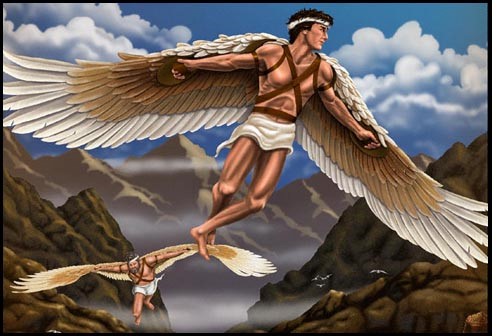Crete, the largest of the Greek islands, is not just a place of breathtaking landscapes and rich cultural heritage; it is also a land steeped in myth and legend. Greek mythology is replete with tales that originate from or are intricately tied to Crete. These stories have captivated the imaginations of people for millennia, offering insights into ancient Greek culture, religion, and values. This guide delves into some of the most famous Cretan legends, unraveling the fascinating stories behind them.
The Birthplace of Zeus
One of the most significant myths associated with Crete is the birth of Zeus, the king of the gods. According to legend, Zeus was born in a cave on Mount Ida (also known as Psiloritis) or alternatively in the Dikteon Cave in the Lasithi Plateau. His mother, Rhea, hid him in a cave to protect him from his father, Cronus, who had a habit of swallowing his children to prevent them from usurping his throne.
In the cave, Zeus was nurtured by the nymphs Adrasteia and Ida, and fed by the goat Amalthea. To muffle the cries of the infant Zeus, the Curetes, a group of warrior dancers, clashed their shields and performed loud dances. This myth not only highlights Zeus’s divine origins but also underscores Crete’s significance in Greek mythology as a land of ancient and powerful deities.
The Labyrinth and the Minotaur
Perhaps the most famous Cretan legend is the story of the Minotaur and the Labyrinth. King Minos of Crete, after ascending to the throne, prayed to Poseidon for a sign of his favor. Poseidon sent a magnificent white bull, which Minos was supposed to sacrifice. However, Minos kept the bull for himself, angering the god. In retribution, Poseidon caused Minos’s wife, Pasiphae, to fall in love with the bull. The result of their union was the Minotaur, a creature with the body of a man and the head of a bull.
King Minos commissioned the master craftsman Daedalus to construct an elaborate labyrinth to house the Minotaur. The labyrinth was so complex that no one who entered could find their way out. This terrifying creature fed on human sacrifices sent from Athens, a city that was subject to Minos after a war.
The hero Theseus eventually volunteered to enter the labyrinth and slay the Minotaur. With the help of Minos’s daughter, Ariadne, who provided him with a ball of thread to mark his path, Theseus successfully navigated the labyrinth, killed the Minotaur, and escaped. This story is a rich tapestry of themes such as heroism, betrayal, and ingenuity, highlighting Crete’s role as a center of mythic tales.
Daedalus and Icarus
Daedalus, the master craftsman who built the labyrinth, is also central to another famous myth. After assisting Theseus, Daedalus fell out of favor with King Minos, who imprisoned him and his son, Icarus, in a tower. To escape, Daedalus fashioned wings for himself and Icarus using feathers and wax.
Despite Daedalus’s warnings, Icarus flew too close to the sun. The heat melted the wax, causing him to fall into the sea and drown. The story of Daedalus and Icarus is often interpreted as a cautionary tale about hubris and the dangers of over-ambition.
Europa and the Bull
Another significant myth is the story of Europa, a Phoenician princess who was abducted by Zeus. Zeus transformed himself into a beautiful white bull and mingled with her father’s herds. Europa was so enchanted by the bull that she climbed onto its back. Zeus then swam across the sea to Crete, where he revealed his true identity and seduced her. Europa became the queen of Crete and bore Zeus several children, including Minos, who would later become a legendary king of the island. This myth is one of many that demonstrate Zeus’s amorous adventures and the divine origins of Crete’s royal lineage.
The Legacy of King Minos
King Minos himself is a legendary figure whose legacy extends beyond the myths of the Minotaur and the Labyrinth. According to mythology, Minos was a wise and just ruler who established Crete as a powerful maritime empire. He was also said to be one of the judges of the dead in the underworld, a testament to his perceived wisdom and fairness.
Conclusion
The myths and legends of Crete are integral to the tapestry of Greek mythology. From the birth of Zeus and the terrifying Minotaur to the tragic tale of Daedalus and Icarus, these stories have shaped the cultural and historical landscape of Crete. They offer timeless lessons about human nature, divine intervention, and the complexities of morality. For anyone interested in exploring the rich mythological heritage of Crete, these tales provide a captivating window into the ancient world and its enduring legacy.


